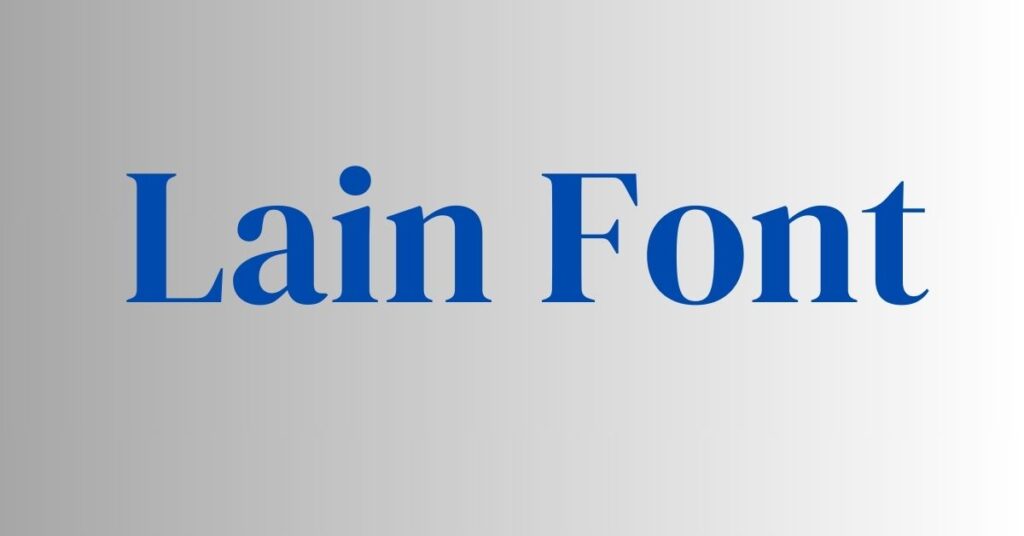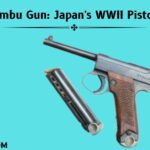
Contents
- 1 Introduction to Lain Font and its Popularity in Design
- 2 The Roots of Lain Font: A Look into its Origins
- 3 The Evolution of Lain Font: Changes and Adaptations in Design Trends
- 4 Creative Uses of Lain Font in Various Industries
- 5 Tips for Incorporating Lain Fonts into Your Design Projects
- 6 The Future of Lain Font and Predictions for Its Continued Success
- 7 Conclusion
- 8 FAQs
- 8.1 1. Can I use Lain Font for commercial projects?
- 8.2 2. Is Lain Font compatible with different design software?
- 8.3 3. Are there different variations or styles of Lain Font?
- 8.4 4. How do I choose a suitable variation of Lain Font for my project?
- 8.5 5. Can I customize the appearance of Lain Font?
- 8.6 6. What are some alternative fonts similar to Lain Font?
- 8.7 7. Can I download free versions of these alternative fonts as well?
- 8.8 Trending!
Introduction to Lain Font and its Popularity in Design
Greetings, lovers of design! We will go on an exciting adventure into the fascinating realm of typography today. Our attention? The mysterious and captivating Lain Font. You’ve likely seen this eye-catching typeface in various settings, regardless of your experience as a designer or inexperience.
Lain Font has swept the design community with its sophisticated vibe, graceful curves, and clean lines. As more and more designers from all backgrounds come to appreciate its distinct appeal, its popularity only grows. However, have you ever thought about the beginnings and development of this recognizable typeface?
We’ll go deep into Lain Font’s history in this blog article, following its modest origins to see how it rose to prominence in contemporary design. We’ll also examine the intriguing modifications and adjustments that have molded Lain Font, representing evolving fashions and pushing artistic limits.
The Roots of Lain Font: A Look into its Origins
Lain Font’s inception dates back to the early 2000s when typography significantly changed. Designers were experimenting at the time to create a modern and fresh style.
In answer to this need for creativity, Lain Font was created. The avant-garde typographer Laura Anderson was inspired by calligraphy, graffiti art, and ancient hieroglyphics, among other things.
Anderson had an evident vision in mind when she set out to design a typeface that would defy expectations while being elegant and readable. She tried a variety of brushstrokes and perspectives before achieving the ideal harmony between edginess and readability.
Word soon emerged among graphic designers worldwide about Lain Font’s distinctive design components and potent ability to portray emotions. Because of its unusual designs, there are countless creative options for branding initiatives, ad campaigns, and digital media.
Lain Font’s adaptability is another factor in its popularity. It works well in various design situations, such as big headlines and delicate body text. It is appropriate for use in multiple industries, such as entertainment, technology, and fashion.
Lain Font’s continuous development keeps it at the forefront of typographic trends. Designers continue pushing the envelope by experimenting with different weights and styles within the font family. Lain Font’s versatility guarantees its relevance in a constantly evolving creative environment.
The Evolution of Lain Font: Changes and Adaptations in Design Trends
Fonts are vital in determining a design’s visual attractiveness, and design trends are constantly changing. Lain Font has undergone a lot of modification and adaptation over time to meet designers’ constantly shifting needs.
Lain Font was renowned for its simplicity and crisp lines in its early iterations. It gained popularity among designers who wanted their projects sleek, contemporary look. However, Lain Font changed with design trends, moving toward more daring and experimental designs.
Lain Font has undergone several revisions to accommodate varying design tastes. While some iterations brought modest modifications in spacing and curvature, others boasted bolder letterforms and heavier strokes.
Lain Font underwent additional modifications to maintain the best legibility across various screen sizes as technology developed and digital platforms took the front stage in the design industry. Because of its adaptability, web designers who want to build aesthetically pleasing websites without sacrificing readability frequently choose it.
Furthermore, Lain Font’s versatility allowed it to go beyond bounds in the sector. Through its ability to integrate easily into various visual settings, this typeface was used in a wide range of industries, from packaging designs for organic food goods to branding materials for digital businesses.
Predicting how Lain Font will develop going forward regarding design trends is impossible. As virtual reality (VR) and augmented reality (AR) become more commonplace in our daily lives, we should still watch for creative applications of this typeface!
Creative Uses of Lain Font in Various Industries
Because of its adaptability and distinctive style, Lain Font has become a favorite among designers and creatives. It is an excellent option for many businesses because of its simple lines and approachable yet sophisticated look.
Fashion designers frequently use Lain Font to create chic and modern logos for apparel companies. Its simplicity preserves a feeling of refinement while letting the design take center stage. Streetwear or high-end luxury, Lain Font can convey the spirit of a company with ease.
Lain Font is widely used in app interfaces and website designs in the technology sector. Its simple design goes well with tech items’ streamlined and elegant appearance. Using Lain Font can help communicate professionalism while making things visually appealing for new and existing businesses.
Lain Font also benefits the food and beverage industries for its branded products. The minimalistic contours of the typeface improve packaging for everything from craft brews to gourmet chocolates. It brings a touch of refinement that satisfies customers’ need for high-quality goods.
Even the interior design industry has used Lain Font. Designers use this adaptable typeface to create modern, minimalistic vibes in signage and typography-based wall art installations for residences, hotels, and restaurants.
Overall, there are countless inventive applications for Lain Font. Its versatility across a range of industries attests to its ongoing appeal. Therefore, consider using Lain Font to make product labels, a logo, or a website.
Its classic beauty makes your design creations come to life!
Tips for Incorporating Lain Fonts into Your Design Projects
1. Choose the Right Variation:
Lain Font is available in various styles and weights, so selecting the one that best fits your project is essential. A Lain Font style will work well for both modern and historical aesthetics.
2. Pair with Complementary Fonts:
Even though Lain Font can make a bold statement, balance, and visual appeal can be achieved by combining it with complimentary fonts. Try out various font combinations until you get the ideal fit.
3. Play with Size and Hierarchy:
Use different font sizes and hierarchies to draw attention to certain parts of your design. Make headlines and essential material for a well-balanced structure more prominent while keeping secondary details smaller.
4. Utilize White Space:
When using Lain Font, avoid packing your design with too much text and instead use white space to allow your type to breathe. This will improve readability and increase the visual appeal of your design.
5. Use Color Wisely:
Consider experimenting with different color schemes when using Lain Font in your projects. Subtle tones produce an elegant and polished style, while bold colors can add vibrancy and capture attention.
6. Consider Contextual Usage:
How you showcase Lain Font will depend on whether you use it for print items, websites, or social media posts. Keep this in mind.
7. Don’t Overuse It:
Even though Lain Font is fascinating, moderation is vital in all parts of your creative work. Please don’t use it all over your work; use it as an accent or focus point.
Although it demands careful thought and experimentation, using Lain Font in your design projects opens up countless creative possibilities.
The Future of Lain Font and Predictions for Its Continued Success
Looking ahead, it’s evident that Lain Font has cemented its position in the design community. This typeface will captivate consumers in various industries thanks to its distinctive fusion of elegance and modernity.
Lain Font’s adaptability is one factor that should contribute to its future success. Designers always look for fonts that work well in various settings and contexts. Lain Font is an excellent option for print products and digital interfaces because of its balanced proportions and clear lines.
Additionally, new platforms and gadgets will need creative typographic solutions since technology is developing at a rate never seen before. Lain Font is a leading choice for these new design difficulties because of its classic appeal and ability to read well on small displays.
Lain Font’s extensive range of weights and styles is another element that fuels its ongoing success. Any project can benefit from a variance in the font family, from delicate scripts to powerful headlines. This flexibility guarantees designers may stay consistent while adding a creative touch to their work.
Additionally, multilingual compatibility will be essential for typefaces hoping to gain universal acceptance as the world’s marketplaces become increasingly interconnected. The Lain Font team is aware of this requirement. It has already started to broaden its language coverage, which will surely increase its visibility in global design circles in the future.
Conclusion
Lain Font has a bright future ahead of her. This typeface will surely be a mainstay in the design industry for many years because of its adaptability and classic charm.
One forecast is that different industries will keep adopting Lain Font. Lain Font’s versatility makes it appropriate for any project, from IT corporations wanting an inventive edge to fashion brands seeking a clean and modern appearance.
We may also anticipate more Lain Font iterations and adaptations as technology develops. It stands to reason that this adored font will see fascinating advancements since designers are constantly pushing the envelope and looking for new and creative methods to produce visually attractive typography.
Furthermore, fonts like Lain are expected to become even more popular due to the increased desire for user-friendly design. It is the best option for websites and mobile applications due to its readability on various screens and devices.
FAQs
1. Can I use Lain Font for commercial projects?
Of course! Lain Font is a flexible option for designers and companies as it may be used for personal and commercial purposes.
2. Is Lain Font compatible with different design software?
Indeed, Lain Font works with several design programs, including Adobe Illustrator, Photoshop, InDesign, and others. It is simple to incorporate into your projects and won’t cause any difficulties.
3. Are there different variations or styles of Lain Font?
Numerous alterations and styles have been developed based on the original Lain Font design. These variants allow designers to explore and produce original visual narratives.
4. How do I choose a suitable variation of Lain Font for my project?
Think about the purpose of your project, the message you want to convey, and the mood you want to create when choosing a Lain Font variation. Every style has an individuality that adds to or subtracts from your overall appearance.
5. Can I customize the appearance of Lain Font?
Although the font is copyrighted by its original creator or designers, you can alter its appearance inside your designs by experimenting with its size, spacing, color schemes, and other visual components.
6. What are some alternative fonts similar to Lain Font?
Try fonts like Roboto, Condensed, Gotham Narrow Bold, and Montserrat Alternates Regular if you’re searching for alternatives to the Lain font but prefer something different or distinctive.
7. Can I download free versions of these alternative fonts as well?
Many alternative fonts have free versions with constrained features or functionality compared to their expensive equivalents. However, they still provide fantastic selections if you’re on a limited budget!






